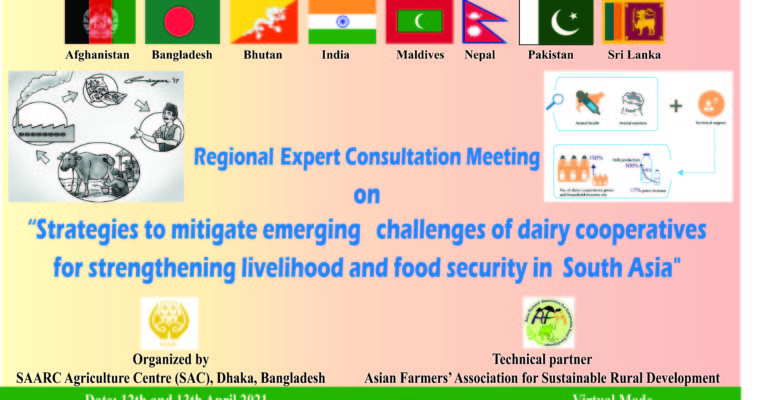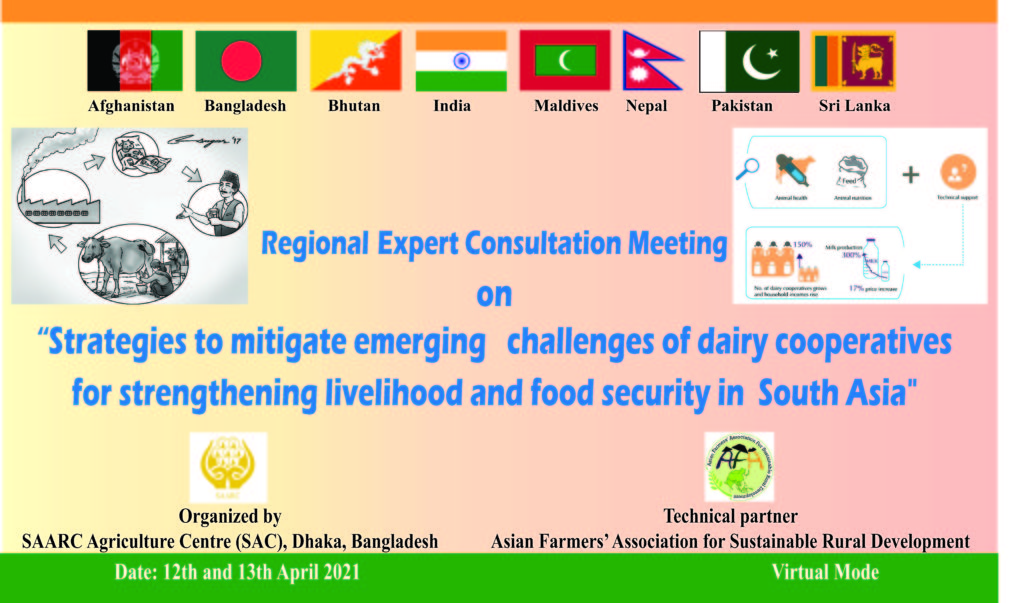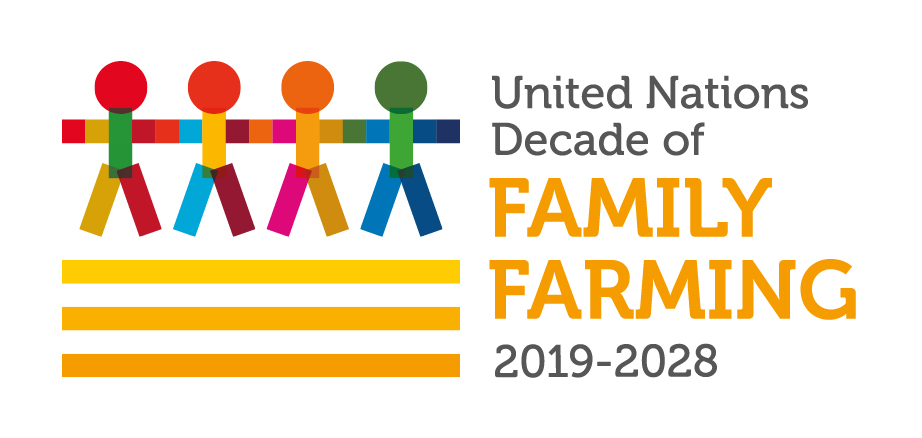Genesis: Regional expert Consultation Meeting on “Family farmers cooperatives to end
hunger and poverty through integrated framing in South Asia held on 22 -24th July 2019 at NDDB, Anand, India
Background
Dairying is a centuries-old tradition for millions of South Asian households by virtue of rearing milk-producing animals, primarily, cows and buffaloes since time immemorial. The South Asian region has emerged as a major contributor to global dairy production and consumption. The milk-producing animals particularly cows and buffaloes play a crucial role among the farming community in the vast majority of the South Asian nations. Often, it is being considered poor people’s “ATM” as marginal farmers build their herd during good times and sell their livestock in bad times to have cash. Fortunately, the livestock wealth in terms of milk-producing animals in the South Asian region is enormous and is comprised of 271 million cattle (18% of the global population), 152 million buffalo (75% of the global population), in addition to 257 million goats (25% of global population). The demands for livestock products particularly milk and milk products in South Asia reflect an increasing trend and expected to follow the same in coming decades because of population growth, economic prosperity, consumer awareness, coupled with health consciousness among the generation next people. In the road of milk value chain, dairy cooperatives play a magnificent role to enhance the productivity, livelihood, and food security, women empowerment, provision of veterinary services (artificial insemination, feed, and fodder, mineral mixture, healthcare, vaccination), procurement, processing, marketing and branding of dairy products. This makes few SAARC Member States as milk sufficient for ensuring adequate availability of milk within their country. On the other hand, several other SAARC Member States are still struggling to meet the domestic requirement in the absence of appropriate dairy cooperatives couples with facing the emerging challenges in the current decade.
Evidently, the emerging challenges of dairy cooperatives including input cost and timely supply, cold chain facility, climate change, transboundary diseases, inadequate livestock healthcare facilities and housing, food safety and quality, branding, etc.; which are impeding the growth and development of dairy cooperatives in South Asia. The growth trend of milk production could be further faster through the intensification of dairy cooperatives in the region after thoroughly addressing those challenges in order to ensure livelihood and food security in South Asia. It is noteworthy to mention that for every 100 liters of milk produced, there is a creation of five off-farm employment as a result of its procurement, processing, and marketing. It clearly necessitates in-depth analysis and assessment of emerging challenges pertaining to the dairy cooperatives, followed by framing of appropriate working strategies to make it stronger with the application of advanced technologies to ensure livelihood, and food security.
In light of the above facts, the technology-driven strategic action plan is of utmost importance for the dairy cooperatives at this juncture, followed by its integration with the national livestock developmental plans to proactively address the emerging challenges of the sector, enable growth and protect the food and livelihood security of vulnerable populations. Therefore, an institutional platform is needed, where key stakeholders of dairy cooperatives from the SAARC Member States, research institutions, civil society, farmers, and other relevant actors will contribute to making it more vibrant, progressive, and finally farmer’s centric.
Objectives
- Introspection of the existing dairy cooperative policies among the Member States and modifications soughed to make it farmer’s centric;
- To understand and analyze current challenges of dairy cooperatives in the SAARC region;
- Augmented policies requirement for enhancing the trade across the SAARC Member States for the milk and milk products generated from dairy cooperatives
Expected Output
The participants of SAARC Member States would be benefitted through sharing of information pertaining to the management, policies, working framework of dairy cooperatives. In the event of sharing of an appropriate and successful strategy of one Member State could be upscaled in other Member State for the benefit of the dairy sector of other Member State. The farmers of the dairy cooperatives will be updated over biosafety measures required during livestock rearing i.e. feeding, watering, vaccination, clean milk production, etc. Introspection of the existing dairy cooperative policy will pave the way to make necessary modifications after due contemplation to food safety, farmer’s welfare, and regional trade enhancement.





Comments are closed